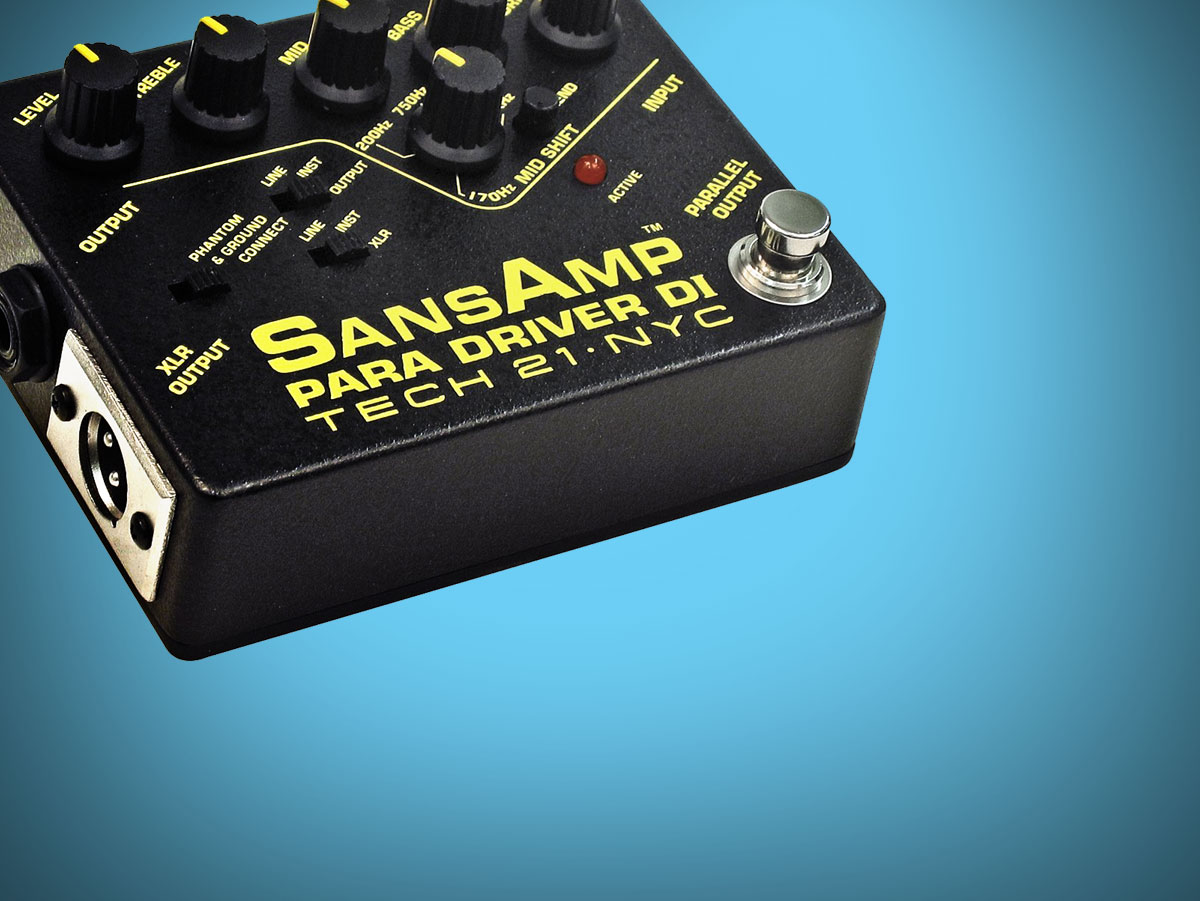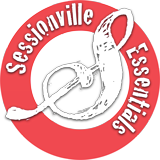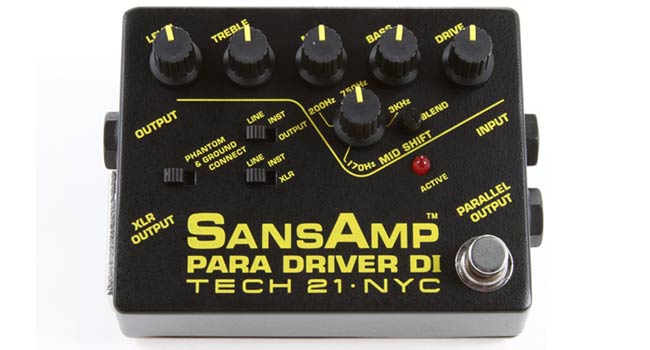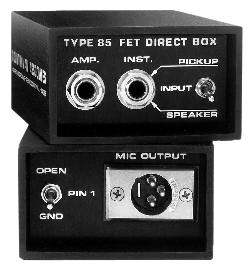- Published Nov 29, 2013 in Gear Garage
Attention all multi-instrumentalists: your pedal board called. It wants a DI with options, one that sounds way better than the piece of junk you picked up at that yard sale.
If you are a) an electric bassist and b) haven’t been living in a fallout shelter since 1989, then you've probably come into contact with Tech 21’s Bass Driver DI. The little black box with the bright yellow labeling has become a pedalboard staple for many players in search of tube girth without the worry.
It’s a lovely little device, and I've used it on many occasions, both live and in the studio.
But I don't own one.
Why? Because I prefer its lesser-known sibling, the Para Driver. Designed with a more instrument-agnostic approach, the Para Driver jettisons the BDDI’s Presence control and replaces it with a sweepable semi-parametric EQ.
Now sure, you could simply turn the Bass and Treble controls of the BDDI down and raise the overall level to create a mid hump, but you'd still be limited to a single frequency. With the Para Driver, you can sweep from 170 Hz to 3.5 kHz and boost or cut as needed, and that, for me, makes all the difference.
We’re all in agreement that a sweepable mid is a handy thing to have, yes? Particularly for fretless basses? Right, so there’s that, but used in tandem with the Drive control, the Para Driver’s sweepable mids also open up a greater range of gritty/overdriven tones that I find more useful than what I can do with the BDDI.
And should, say, the bouzouki start feeding back, I can swap the Para Driver into the signal chain and sweep the mids until I find the offending frequency. That appeals to me in an Alton Brown multi-tasker-good/single-tasker-bad kind of way.
Ultimately the BDDI and the PDDI (which I will henceforth refer to as the ‘P. Diddy’ when referring to my pedalboard) still share enough DNA to be brothers, but if you're a mid freak into mid freqs, give the Para Driver a go.
- Designed by Tech 21
- Controls Active tone controls with 12dB of cut or boost
- Powered by One 9-volt battery or AC adapter
- Size & Weight 4.75 inches x 3.75 inches x 2.0 inches; 12 ounces
- Price $209
- More info www.Tech21NYC.com




